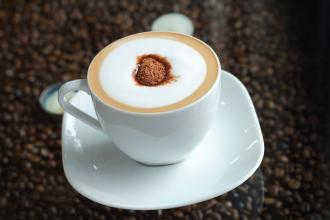Taste smooth, clean and mild Mexican coffee flavor taste manor features boutique coffee introduction
Mexicans eat "wishing grapes" for the New year. People around the world bid farewell to the old and welcome the new with their own unique customs. In Mexico, people eat "wishing grapes" to celebrate the New year. Grapes are a must for every Mexican family at the end of the year. Every time the bell rang to bid farewell to the New year and welcome the New year, people ate a total of 12 "wishing grapes," each of which made a wish for "peace,"happiness,"health," and "wealth." pray for good luck in the new year from the beginning of the year to the end of the year.
"Harabe" is the most representative folk dance in Mexico. Men wear traditional national costumes and wide-brimmed hats, enthusiastically focus and chase after female partners; women wear wide, fat and gorgeous homespun skirts, pretending to be shy and avoiding gracefully, and throw various flower patterns with skirts from time to time.
Mexico is the hometown of corn, and the local people have a deep affection for corn. In the past 5000 years, corn has become the third largest food source in the world from an unknown wild millet, which is inseparable from the industry and wisdom of Mexicans. The Mexicans also created Mayan and Aztec civilizations in the process of growing corn. Mexicans often say: "created corn, corn also created us, we are corn people." [11]
Art
Mexico is an ancient American civilization that once gave birth to Maya, Aztec, Toltec, Olmega and Teoti.
The ruins of the ancient Mayan city
The ruins of the ancient Mayan city
Ancient Indian cultures such as Huakan. Maliaki music and Sabateo dance combine the characteristics of Spanish and Indian music and dance and become a unique national art form in Mexico. Twenty-one monuments have been declared "cultural and natural heritage of mankind" by the United Nations.
Mexican folk dance has been evergreen for 58 years. The large-scale historical and cultural dance called "Mexican Folk Ballet" was choreographed by the famous Mexican artist Amalia Hern á ndez in 1952. The dance drama combines the unique folk culture of Mexico and shows the historical evolution since the 200th anniversary of Mexico's independence. For 58 years, the dance drama has been loved by Mexican people as well as foreign tourists. At the same time, it has also been praised by Mexican domestic and international critics, who believe that dance drama is an important artistic achievement in Mexico.
Mexican literature is unique in Latin America. Writers Octavio pass (1990 Nobel Prize for Literature), Juan Ruerford and Carlos Fuentes are all giants of modern Spanish literature. Mexican murals are world-famous. Rivera, Orozco and Cecilos are outstanding mural painters.
Mexican coffee-growing areas are mainly concentrated in the southeastern highlands, near Guatemala. Most of the mountains in the south are volcanic areas, and the volcanic ash soil is not only conducive to the drainage of coffee roots, but also provides sufficient nutrients for the growth of coffee trees. Most of the coffee varieties planted are Kaddura, Tibica, bourbon, etc., and the treatment methods are mostly water washing treatment, which are classified according to altitude.
Coffee beans are mainly exported to the United States, and about 70% of the coffee is exported directly to the United States, which is used as a large amount of industrial beans, making it a coffee plantation in the United States. However, Mexico's annual output is not proportional to its position in the coffee world. Although the output is large, there is a lack of some representative boutique coffee with outstanding quality. So when it comes to the level of understanding of Mexican coffee, most people, including myself, will feel relatively strange. When we taste and discuss beans from excellent producing areas of various countries, Mexican coffee exists awkwardly like an outsider.
But with a climate suitable for coffee growth, excellent coffee varieties, good soil and high-altitude planting areas, why is the quality of Mexican coffee not satisfactory?
A few days ago, when I went to Mexico, some colleagues jokingly called Mexico popcorn coffee. The quality of the raw beans exported by Mexico was not good, and the raw beans bought were sometimes mixed with a little corn and sand. If the corn is not picked clean and mixed with raw beans into the roaster, it will really become popcorn. But now the quality of raw beans exported from Mexico has been greatly improved, and the mixing of corn kernels has been a story for many years. Corn was cultivated by the ancient Indians of Mexico, so Mexico is known as the "hometown of corn", and corn is also the main crop in Mexico. Coffee in the drying process is not fine enough to mix with corn kernels. This explains why corn is mixed with corn. From this matter, it is not difficult to find that the root cause of the unsatisfactory overall quality of Mexican coffee lies in the follow-up production processing. From the harvest, treatment, grading, packaging and transportation of coffee fruits, unreasonable operation will lead to the loss of good flavor.

Important Notice :
前街咖啡 FrontStreet Coffee has moved to new addredd:
FrontStreet Coffee Address: 315,Donghua East Road,GuangZhou
Tel:020 38364473
- Prev

Dominica Coffee Flavor and Taste characteristics of Santo Domingo Coffee and beans
Coffee in Dominica is grown in highlands and lowlands, and its taste is slightly different. The upland is sour, but the taste is rich; the lowland is less sour and tastes smoother. Boutique coffee has become popular in recent years. High-quality coffee beans produced by some Dominican estates have a rich aroma, mellow taste and moderately bright sour taste, and have been bought with the more famous Puerto Rico beans or teeth.
- Next

Introduction to the characteristics of Panamanian Kasha Coffee Flavor Manor with moderate Sour and Sweet
In addition to creating good coffee cultivation conditions, the Lamastus family, which runs the Elida estate, has also planted many different native tree species on the estate, not only to shade the coffee trees, but also to provide a friendly habitat for birds. In terms of fertilization, the Lamastus family uses artificial fertilization and a small amount of chemical fertilizers, but never uses pesticides and herbicides that are harmful to the environment. Eye
Related
- Detailed explanation of Jadeite planting Land in Panamanian Jadeite Manor introduction to the grading system of Jadeite competitive bidding, Red bid, Green bid and Rose Summer
- Story of Coffee planting in Brenka region of Costa Rica Stonehenge Manor anaerobic heavy honey treatment of flavor mouth
- What's on the barrel of Blue Mountain Coffee beans?
- Can American coffee also pull flowers? How to use hot American style to pull out a good-looking pattern?
- Can you make a cold extract with coffee beans? What is the right proportion for cold-extracted coffee formula?
- Indonesian PWN Gold Mandrine Coffee Origin Features Flavor How to Chong? Mandolin coffee is American.
- A brief introduction to the flavor characteristics of Brazilian yellow bourbon coffee beans
- What is the effect of different water quality on the flavor of cold-extracted coffee? What kind of water is best for brewing coffee?
- Why do you think of Rose Summer whenever you mention Panamanian coffee?
- Introduction to the characteristics of authentic blue mountain coffee bean producing areas? What is the CIB Coffee Authority in Jamaica?

